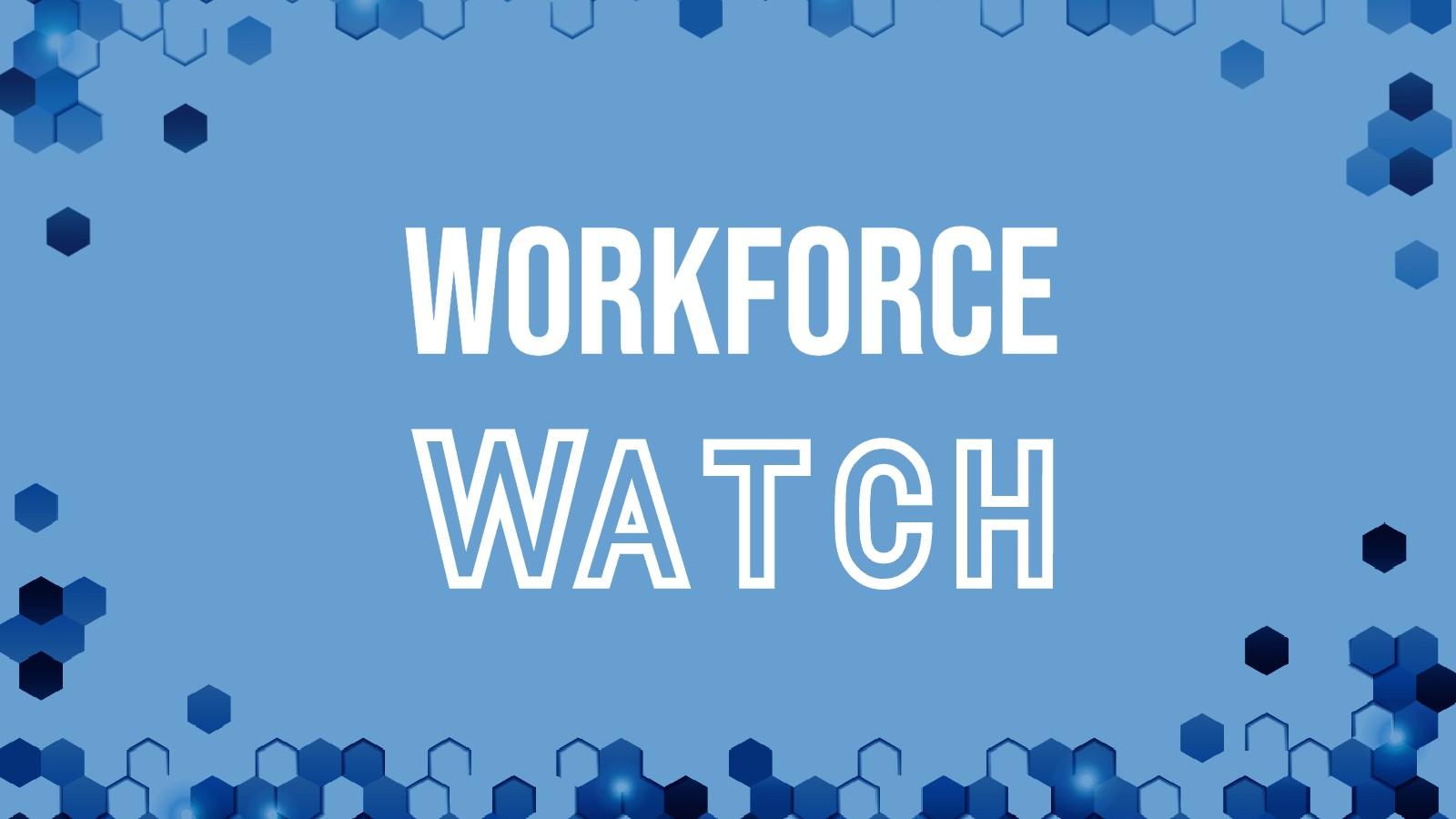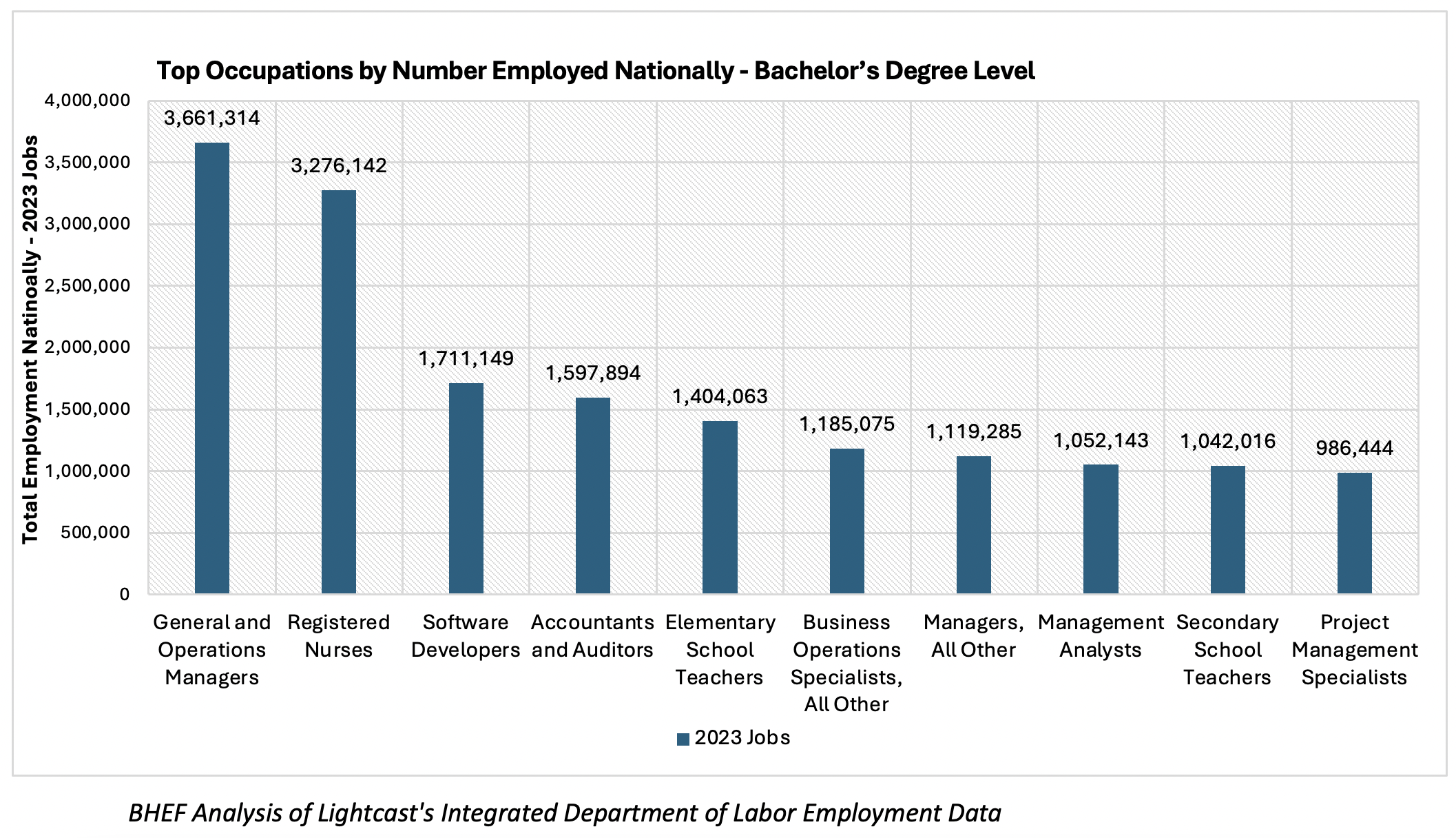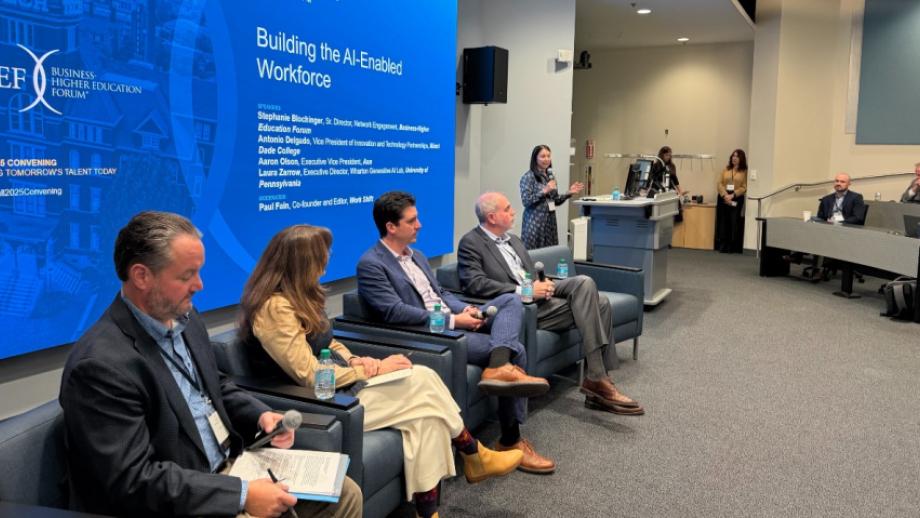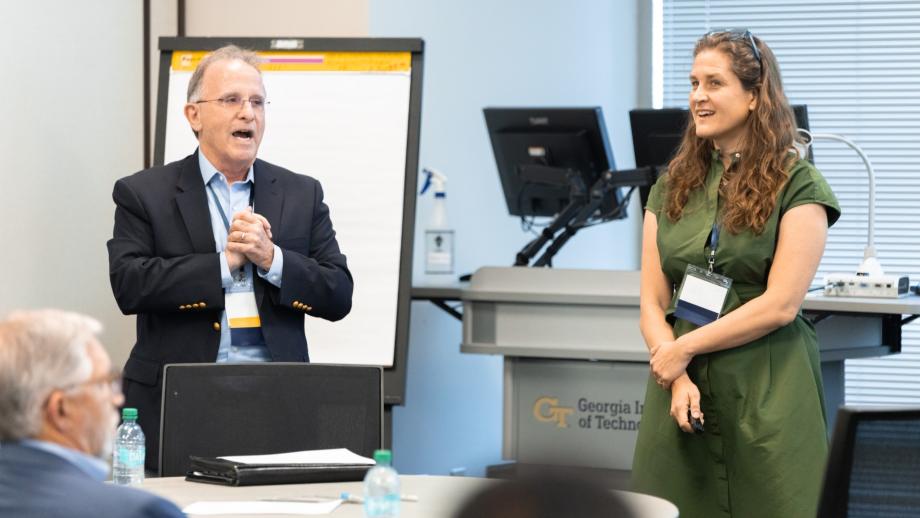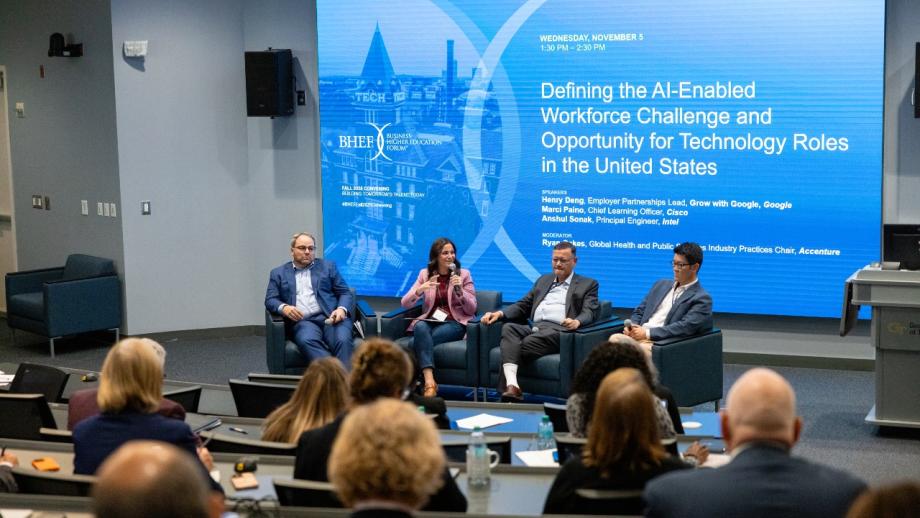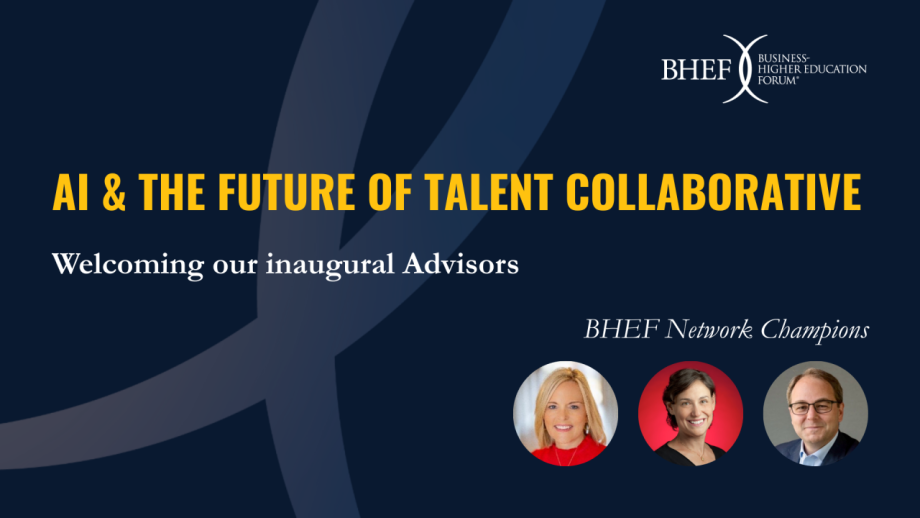Employment in the U.S. is projected to increase to over 4.6 million jobs by 2032. What are the current occupational trends and which jobs are expected to see the most growth?
The top occupations for those with a bachelor’s degree include management, teaching, business roles like accountants and management analysts, and software developers. Apart from Project Management Specialists, these are mostly the same top occupations from five years ago. Across these high-volume roles, software developers are expected to grow the most, with a projected increase of 26% by 2032. Registered Nurses and General and Operations Managers are projected to grow by 6% and 4% respectively, adding significant numbers of jobs.
While the top occupations have remained consistent, the skills and knowledge needed for success in these occupations are evolving. Emerging technologies like genAI, quantum computing, clean energy, and healthcare advancements are changing the skills composition within these roles, driving changes in both how entry-level talent is prepared and existing talent is re-skilled.
Outside of these top occupations, there are areas where significant growth is occurring – led by the green economy and energy, healthcare, and technology. Wind Turbine Service Technicians lead growth projections with a 45% increase by 2032, followed by Nurse Practitioners at 44.5%, and Data Scientists at 35.2%.
The AI Workforce Moment Is Here: Here Is How Business and Higher Education Are Leaning in Together
Posted December 9, 2025
AI is not eliminating work. It is transforming every job, reshaping roles and skills at a speed most organizations are still trying to comprehend. With more than 150 million workers likely to require some level of AI upskilling in the coming years according to leaders at the event, the central challenge is not displacement: it is readiness.
Work-Integrated Learning Takes Center Stage at Business-Higher Education Forum Fall Convening
Posted November 26, 2025
Work-integrated learning is emerging as essential infrastructure for preparing talent, and leaders at BHEF’s 2025 Fall Convening highlighted how apprenticeships, internships, and real-world projects are helping students meet the pace of today’s evolving workplace.
Corporate Leaders Challenge the Field to Reimagine Work, Not Just Retool It
Posted November 13, 2025
What if AI readiness isn’t about retooling workers, but reimagining work entirely? Advisors from BHEF’s AI and Future Talent Collaborative share why traditional workforce planning can’t keep pace—and what will.
Future-Proofing Talent in an AI-Powered World: A Sharp Competitive Advantage
Posted September 23, 2025
As the pace of AI transformation accelerates, organizations across every sector grapple with the same fundamental question: How do we prepare our people to thrive alongside artificial intelligence? From marketing to supply chains to HR, AI alters how tasks are done, decisions are made, and value is created. For business and talent leaders, that presents both an opportunity and a risk.
BHEF Announces Inaugural Advisors for the AI & Future of Talent Collaborative
Posted September 18, 2025
The Business-Higher Education Forum (BHEF) is pleased to announce its inaugural Advisors to its AI & Future of Talent Collaborative ("BHEF AI Collaborative"). Launched in May 2025 under the leadership of BHEF Board Members Ryan Oakes (Accenture), Lisa Gevelber (Google), and Jae Lynn Akin (State Farm), the BHEF AI Collaborative will help business and higher education leaders align AI technology adoption with workforce needs across industries and occupations.
AI’s Impact on Early Talent: Building Today’s Education-to-Employment Systems for Tomorrow’s Workforce
Posted August 6, 2025
Entry-level roles are evolving fast in the age of AI—are our education-to-employment systems keeping up?

